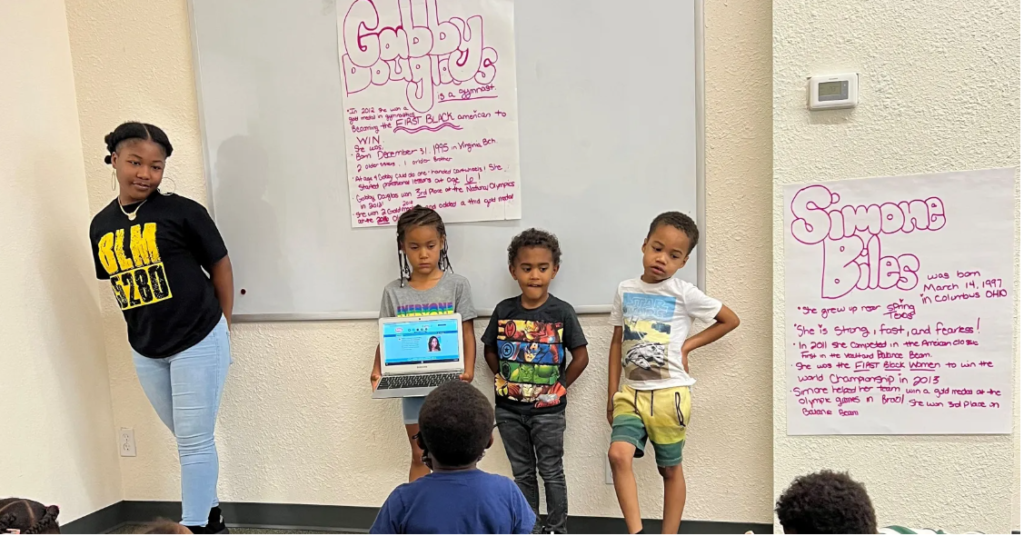Photo: Superintendent Alex Marrero addresses the media after a shooting inside East High School on March 22. Denver Mayor Michael Hancock, left of Marrero; Denver Police Chief Ron Thomas, right of Marrero. Photo by: Erica Meltzer / Challkbeat
Police officers will stay at large secondary schools this fall, armed school district safety officers will help with weapons searches, and Denver Public Schools leadership will “comprehensively examine current student discipline practices.”
Those are among the details in the final draft of a long-term safety plan that Superintendent Alex Marrero released Friday (June 30) in line with a deadline set by the school board.
In an interview, Marrero called the plan “an index of what we have to offer.” He implied that the plan would continue to evolve with the district’s needs.
“By no means do I want anyone to think this is one and done,” Marrero said. “It is the start of a larger conversation, not only here but also nationally.”
The shooting spurred intense debate and community activism, including the formation of a parent group that called for increased safety, as well as backlash against returning police to schools. A divided school board ultimately voted to allow the return of armed school resource officers, known as SROs.
A previous board had voted in 2020 to remove SROs — a ban that was temporarily suspended following the East shooting.
The final safety plan released Friday is its third iteration. Marrero released the first and second drafts last month. The final version is clearer in that it lists the “current state” of certain district safety programs and the “future state” — to show what will change.
The school board does not need to vote on the plan.
The changes include that DPS will:
Return SROs to comprehensive middle and high schools.
The plan doesn’t specify which schools, but Marrero said in an interview that SROs will return this fall to the 13 campuses where they were stationed this spring following the East shooting.
Eighteen middle and high school campuses had an SRO when the board voted to ban them in 2020. Following this fall, Marrero said in an interview that the district will develop a protocol for deciding which campuses have SROs.
Allow schools to determine, after extensive community engagement, whether to employ weapons detection systems.
DPS already has four mobile weapons detection units by the company Evolv Technology that the plan says the district uses for “athletic events and events requested by administrators.” A fiscal memo says “substantial and widespread detection systems at all schools or at high schools only would likely exceed $5 million.”
Conduct a staffing analysis to evaluate the presence of unarmed campus security officers.
Unarmed officers are stationed at middle and high schools and are different from SROs. The analysis will determine “where more staff may be needed or how resources can be shared,” the plan says. Marrero said in an interview that it could show the district needs to hire more unarmed officers.
Provide more support to school staff in conducting student searches, especially if weapons may be found.
For example, the plan says that if a student is required to undergo a search because they were found to have a gun outside of school, an armed DPS safety patrol officer “will be designated to support that for the specific window of time that allows for a safe, supervised search and entry into the building.”
In the aftermath of the East shooting, some parents and educators said searches should be conducted by police or security staff rather than administrators, as was happening at East. The district has said SROs can’t search students without probable cause, but an armed DPS safety patrol officer — who is not a sworn police officer — can.
Work with local law enforcement to host youth violence meetings in each region of the city.
The meetings would be “to monitor trends of violence impacting school communities and strengthen partnerships to dismantle barriers impacting access to programming for youth,” according to the plan.
Expand the district’s online high school and potentially offer hybrid learning.
After the East shooting, some parents questioned why the shooter, who had been expelled from a neighboring school district and had a weapons charge, was attending school in person and not online.
While Marrero said the district believes in-person learning is best and is “not in the business of just shipping kids out,” he said DPS is considering a protocol that would allow students to learn online while the district figures out a plan for them to safely learn in-person.
Develop an online dashboard to better track and monitor “action and intervention plans,” which are put in place for students who may pose a threat to themselves or others.
Conduct safety audits of DPS school buildings and make “physical infrastructure recommendations such as secure vestibules, camera placement, lighting,” the plan says.
Those recommendations could also include wearable panic buttons for teachers, Marrero said. The audits are already underway with the help of consultant Murphy Robinson, who was formerly head of the Denver Department of Public Safety.
Have district leaders attend the Public Education Leadership Program Institute at Harvard University this summer to collaborate with other large urban districts on issues including safety.
DPS leaders will then “comprehensively examine current student discipline practices with the goal of enhancing the experience of safety, while maintaining compliance with federal and state law, and achieving the goal of equity and inclusion for all students,” the plan says.
Increase training for DPS staff on issues such as suicide prevention, threats posed by students, emergency management, and crisis recovery.
Increase offerings for students, including advanced high school coursework, college-level courses, work-based learning, and after-school and summer programming.
Require annual suicide prevention programming for all students in 5th, 6th, 9th, and 12th grades. This programming was previously optional, Marrero said.
Require all students be screened for social and emotional health three times per year, which “represents a dramatic increase” in the use of the screening tool, the fiscal impact note says. DPS plans to pay for the screener next year with federal COVID stimulus funds.
Offer at least “one session on grief and loss” for staff and parents who need it.




